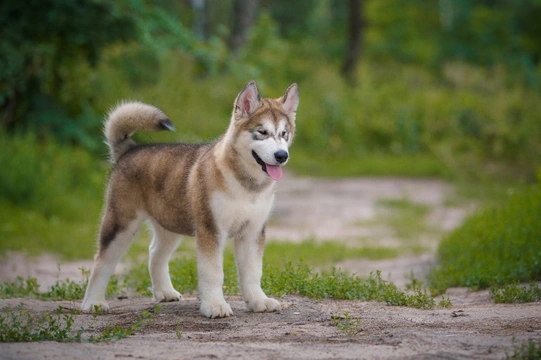
10 things you need to know about the Alaskan malamute before you buy one
The Alaskan malamute is a large, personable and very outgoing dog that is large and rangy and very good looking. The breed’s good looks mean that they appeal to a lot of different types of prospective owners, but their temperament is not a good fit for everyone and they’re not a breed to buy on a whim without doing plenty of research first.
If you are wondering if the Alaskan malamute is the right choice of dog for you, it is vital to take your time over the decision and find out as much as possible before you start trying to choose a breeder and pick out a malamute puppy of your own.
With this in mind, this article will tell you 10 things you need to know about the Alaskan malamute, before you go out and buy one. Read on to learn more.
1. The Alaskan malamute is a very large dog
The Alaskan malamute is a large dog, and they’re both tall and reasonably well built, and quite rangy too.
They are also naturally quite strong dogs, and have a fairly imposing physical presence.
2. They have very high energy levels
The Alaskan malamute was originally bred as a pack dog and a very versatile working dog that would be able to do a combination of things including helping to catch prey, be used to pull sleds and carry equipment, and serve as watchdogs too.
They have incredibly high energy levels and need significant amounts of exercise each day to keep them happy, which includes plenty of time running off the lead too.
3. They are personable, outgoing and highly social dogs
The Alaskan malamute tends to be a personable and highly social dog that enjoys the company of both other dogs and people, and which is very social in the dog park with both friends and strangers alike.
They tend to get on well with strangers, and are quite bold and outgoing about introducing themselves to people to make friends!
4. Their coats are high maintenance
The Alaskan malamute coat has different layers to it to provide insulation, including a very dense and plush undercoat. This means they need lots of brushing and grooming to keep their coats in good condition and to prevent them from getting knotted and matted.
5. They are also a very heavy shedding dog breed
The malamute coat is one of the most heavy shedding of all dog breeds, and this tends to occur all year round. However, in the spring and autumn they also go through a seasonal coat shed that causes them to lose virtually their whole coat within a couple of weeks, which can be very challenging to keep on top of!
6. They require a lot of mental stimulation and entertainment
The Alaskan malamute has an inquisitive nature and so they need a reasonable amount of mental stimulation and entertainment to be provided for them to keep them happy and mentally engaged.
Without this, they are apt to become bored and destructive, and very hard work to have around!
7. Alaskan malamutes are towards the lower end of the intelligence spectrum
The Alaskan malamute falls in 95th position out of 138 dog breeds on the canine intelligence spectrum, which is of course in the lower half.
Dogs of the breed should be able to learn and execute all of the basic core training commands a dog needs to know, but they are somewhat limited in their scope and capacity for complex and higher level commands.
8. They tend to have a short attention span and can be a challenge to motivate
The Alaskan malamute has a fairly short attention span and they are quite easily distracted, and so training needs to be kept engaging, fun, varied and interesting otherwise the dog simply isn’t likely to pay attention to their trainer.
If you cannot keep the dog’s attention they will not be able to learn effectively, and so generally someone who is relatively experienced with dog training and that knows how to motivate a dog that is apt to get distracted easily is the most effective Alaskan malamute trainer.
9. They need clear direction and confident handling
The Alaskan malamute is a confident dog breed that will naturally take the leadership position if it isn’t already filled, and so they need clear direction to be provided by a confident handler that is able to motivate the dog, gain and keep their attention, and channel their energies in positive directions.
A poorly managed malamute may become dominant and unruly, which in a dog of this size is of course a problem.
10. They are a complex breed that is not a good pick for everyone
The Alaskan malamute is a complex dog breed that isn’t a good pick for everyone, and they require careful consideration before you can make a reasoned decision that they are the right type of dog for you.
They are very lively, large and confident dogs, and so are rarely a good pick for a first time or inexperienced dog owner, or someone who doesn’t do enough research.



